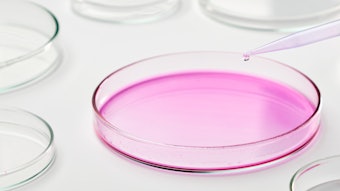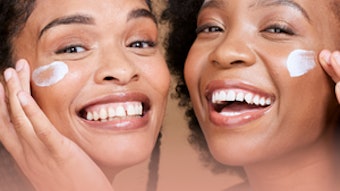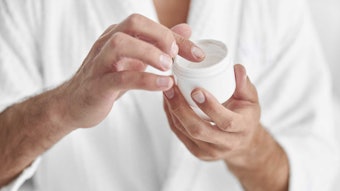
Niacinamide is known for its skin benefits. Here, select ingredients were combined with it and explored for its potential to also protect against contamination. MIC data and challenge testing are presented, supporting the ingredient’s dual functionality.
This article is only available to registered users.
Log In to View the Full Article
Niacinamide is known for its skin benefits. Here, select ingredients were combined with it and explored for its potential to also protect against contamination. MIC data and challenge testing are presented, supporting the ingredient’s dual functionality.
The cosmetics and personal care industry is a fast-growing sector with many products now providing multifunctional benefits and crossing categories. Of all the benefits a product provides, first and foremost, consumers expect it to remain stable and effective so they can use it safely and with total confidence for the entirety of its established shelf-life.
Preventing microbiological contamination during this period is particularly critical. Not only can contamination affect the product’s quality and properties, it also can pose a threat to human health. As such, other than in a few specific situations, most cosmetic products require a preservative.
Although preservatives are a small component of a product’s formula, they are a critical one. Indeed, in most cosmetic products, water is the highest percentage of the composition, which is where microbial contaminants will thrive and proliferate rapidly if the formula is not protected.
As most readers know, preservatives and preservation systems are designed to inhibit the development of microorganisms in a cosmetic product during transport, storage and use. They must provide effective protection but also be safe for human health – and there is no one-size-fits-all solution. The preservative must be selected for the given formulation.
Selecting the right preservative for a given formula is often considered a constraint. But what if a preservative could be made more desirable, for example, by providing added skin health benefits? This was the focus of the work described here, as will be shown. Setting the stage, however, it is first helpful to consider the evolution of preservation to see how we got here.
The Evolution of Preservation
In the last decade, with changing consumer expectations and demands, the types of molecules used to protect products against microbial contamination have evolved (see Figure 1). In fact, the range of molecules used today is more restricted and sustains a broader spectrum of cosmetics globally as conventional compounds are phased out.
Classical approach: The classic approach to preservation was fundamental: to safely and effectively protect a product formula. Traditional preservative categories included molecules such as parabens, isothiazolinones and phenoxyethanol.
Free-from era: Recent years have seen the free-of or free-from era, omitting these traditional molecules in favor of those more aligned with clean beauty, naturality and sustainability edicts. Here, boosters became popular to help respond to consumer demand.
Multifunctionality: Today, in addition to the previous considerations, there is growing consumer demand for multifunctionality – in this case, ingredients that not only preserve a formula, but also offer skin health benefits. To answer this need, the authors’ company sought to develop a safe and effective solution combining various preservation techniques to meet key requirements such as:
- Combining preservation efficacy with skin health benefits,
- Preserving hydrophilicity,
- Offering platform capabilities,
- Creating an environmentally friendly and natural solution,
- Ensuring compatibility with other ingredients in formulations, and
- Accounting for worldwide use and acceptance.
Choosing the Multifunctional Platform
The top requirement was multifunctionality – in this case, effectively preserving the formula while also benefiting skin health. The first challenge was therefore to identify a substance with multiple benefits for skin health and that had no preservation efficacy by itself but when combined with a second compound, synergistically provided this effect.
After numerous trials, the substance that presented the targeted specifications was niacinamide, or vitamin B3. Niacinamide offers multiple skin benefits, including improving skin barrier and elasticity, stimulating collagen production and reducing TEWL;1, 2 and it has been well-recognized for such, gaining momentum since 2018 in all beauty segments, per Mintel (see Figure 2).
In addition, niacinamide has no preservation efficacy by itself, as established by its Minimum Inhibitory Concentration (MIC) values. Recall that the MIC value refers to the lowest concentration of an antimicrobial component that can inhibit the growth of a specific microbial strain. Niacinamide’s MIC values against five standard microorganisms are quite high – i.e., 15,000-40,000 (see Figure 3); typical MIC values for adequate preservation do not exceed a few thousand ppm.5
However, it was found that when niacinamide was combined with specific compounds – selected glycolsa or polylysineb – their preservation efficacy was higher than for each alone and was not pH dependent.
MICs, Checkerboard Assay and Synergies
To assess the synergistic potential of niacinamide with other compounds, the checkerboard assay was used to compare MIC values for each component individually with that of the combined blend. The blend showed lower MIC values than the individual components (see Table 1).
This effect was then quantitatively determined using the Fractional Inhibitory Concentration index (FICI) calculation. The FICI value reflects interactions between antimicrobial compounds. A value smaller than 1 shows a synergy.6 The data for each combination is shown in Table 2 and Table 3, where values as low as 0.30 and 0.27 were achieved.
Antimicrobial Efficacy Test Protocol
To confirm the preservative efficacy of the niacinamide-based platforms, challenge tests with several cosmetic creams were performed. Base formulas comprised: water (demineralized), glycerin, cetearyl glucoside (and) cetearyl alcohol, caprylic capric triglycerides, cetearyl alcohol (and) ceteareth-20 and tocopheryl acetate, with and without the niacinamide platformsa at 3%. The method applied was based on USP 35, chapter <51>.3
Inoculation: The products were inoculated separately with five microorganisms: the bacteria Escherichia coli (ATCC 8739), Staphylococcus aureus (ATCC 6538) and Pseudomonas aeruginosa (ATCC 9027); Candida albicans (ATCC 10231), a yeast; and Aspergillus brasiliensis (ATCC 16404), a mold. The final inoculum was 105-106 CFU/g product for bacteria, and 104-105 CFU/g product for yeast and mold.
Following inoculation, products were tested for viable microbial count at 2, 7, 14 and 28 days. The results of a cream with the niacinamide and glycol combination are presented in Table 4, indicating the formula passed the challenge test.
Additional testing: Verification of this preservation efficacy was extended beyond the traditional protocol by adding other microbial strains that can be encountered: Klebsiella pneumoniae (ATCC 13883), Burkholderia cepacia (ATCC 25416), Serratia marcescens (ATCC 13880) and Pluralibacter gergoviae (ATCC 33028) (see Table 5). An additional verification was the re-innoculation of samples after seven days (see Table 6).
The same studies were performed using the niacinamide and polylysine combination and delivered the same conclusion (not shown).
Preservation Mechanism
Detailed information about the niacinamide platform’s mode of action has recently been published4 but generally, three activities are observed: morphological changes, cell cycle arrest and DNA interference (see Figure 4 depiction).
In the natural multiplication process, microbe cell volume decreases over time (see Figure 5). When the niacinamide platform is added, the cell volume increases (see Figure 6) – but as the cell prepares for division, its separation into two daughter cells is arrested (see Figure 7).
What’s more, longer incubation periods with higher (2.5%) concentrations of the niacinamide platform show more significant increases in cell size (see Figure 7). This causes DNA dispersal, as shown by fluorescence microscopy (see Figure 8). Niacinamide was also found to directly interact with DNA, hindering successful amplification.4
Additional Considerations
As stated previously, the solution under development aimed to meet additional requirements such as preserving hydrophilicity and safety and regulatory compliance. These are discussed following.
Preserving hydrophilicity: There are two categories of preservatives: hydrophilic and hydrophobic. The hydrophilic option was a strategic choice as it is more adequate for most cosmetic product formulations since most products contain a large quantity of water where microbial contamination will take place (if not adequately preserved). Also, relatively few favorable hydrophilic options are available, so there is a strong need for hydrophilic preservatives. The niacinamide-based platform responds to this need, as evidenced by its negative LogP (see Table 7); generally, LogP values lower than 1 are considered hydrophilic.
Safety, regulatory and sustainability: The niacinamide-based platform was also tested by a third party for skin and ocular irritation under dermatological control and found to be safe up to a maximum of 5% for all skin and facial applications (not shown). It is globally compliant in all regions including China, and demonstrates sustainability thanks to its waterless and solvent-free form, vegan status, 60% Natural Origin Index niacinamide, and biodegradability, among other properties (not shown).
Conclusion
To cater to continuously evolving consumer demand in the fast-paced cosmetics and personal care industry, innovative approaches are needed. The niacinamide platforms described here provide an example.
Extensive research identified the well-known niacinamide for its potential preservation effects when combined with given compounds – on top of its well-known skin benefits. Thus, the niacinamide platforms developed demonstrate efficacy in protecting cosmetics from microbial contamination while also delivering skin benefits and having an eco-friendly nature. This provides product development teams with a powerful solution to meet today’s and tomorrow’s consumer demand.
Footnotes
a AquaVita 90 (INCI: Niacinamide (and) Glyceryl Caprylate (and) Decylene Glycol) and
b AquaVita 95 (INCI: Niacinamide (and) Polylysine) are patent-pending products of Sharon Personal Care.
References
1. Boo, Y.C. (2021). Mechanistic basis and clinical evidence for the applications of nicotinamide (niacinamide) to control skin aging and pigmentation. Antioxidants, 10 1315.
2. Marques, C., Hadjab, F., … Laurent, A., et al. (2024). Mechanistic insights into the multiple functions of niacinamide: Therapeutic implications and cosmeceutical applications in functional skincare products. Antioxidants 2024, 13, 425.
3. U.S. Pharmacopeia. (Accessed 2025, Jun 26). <51> Antimicrobial effectiveness testing. Available at http://www.uspbpep.com/usp29/v29240/usp29nf24s0_c51.html
4. Ziklo, N., Bibi, M., Sinai, L. and Salama, P. (2024 Aug). Niacinamide antimicrobial efficacy and its mode of action via microbial cell cycle arrest. Microorganisms, 2 12(8) 1581.
5. Nasrollahi, S.A., Fattahi, M., et al. (2022). Effects of cosmetic preservatives on healthy facial skin microflora. J Clin and Aesthetic Dermatology, 15 8.
6. Odds, F.C. (2003). Synergy, antagonism and what the chequerboard puts between them. J Antimicrobial Chemotherapy, 52 1.










